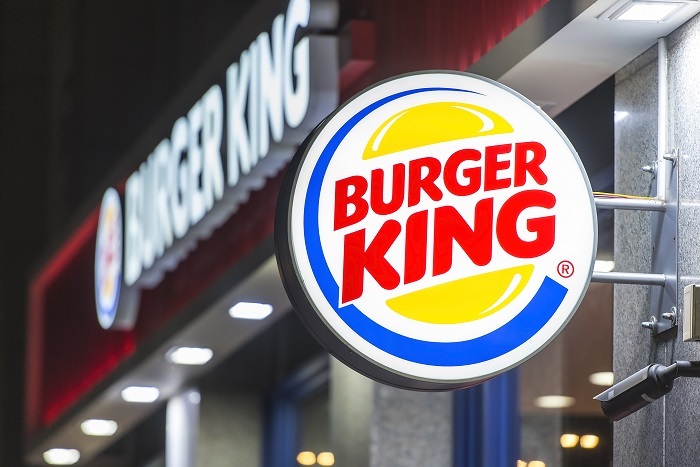
 Data Structure
Data Structure Networking
Networking RDBMS
RDBMS Operating System
Operating System Java
Java MS Excel
MS Excel iOS
iOS HTML
HTML CSS
CSS Android
Android Python
Python C Programming
C Programming C++
C++ C#
C# MongoDB
MongoDB MySQL
MySQL Javascript
Javascript PHP
PHP
- Selected Reading
- UPSC IAS Exams Notes
- Developer's Best Practices
- Questions and Answers
- Effective Resume Writing
- HR Interview Questions
- Computer Glossary
- Who is Who
Localization Vs Standardization: The Company's Choice
Privatization, liberalization, and globalization policies have been beneficial for every country. These policies have ensured that trade can flourish, and the globe has now become borderless when it comes to trade. Countries and their citizens can now enjoy the benefit of having Swiss chocolate with French bread and the United Kingdom's tea on their dining tables in India. But everything has its own pros and cons. With this variety, it has also become difficult for companies to survive and boom in their own country. Big multinational corporations can take advantage of their capital and expand the market to produce quality goods at lower prices, but they are in a dilemma regarding production.

In this article, we will be understanding what big multinational corporations should do when they have expanded globally. Should the companies maintain the standardization of their products throughout the world or adapt locally to connect with the consumers, and what will be the pros and cons of both methods? And what twists and tweaks various renowned companies made when they entered the global market.
The Concept of Localization and Standardization
Standardization entails selling the same product to the same consumers using the same marketing and positioning techniques. These businesses believe in providing the same experience to customers regardless of where they are.
Localization means customizing either the product, marketing, and promotional strategies or all of them as per the market and the country the company is operating in for its consumers. Here, the company believes in adjusting the brand to be more consumer-friendly as needed.
Parameters that Can Be Localized and Standardized by Businesses
Product and Service Offerings ? Companies can make significant or small changes in terms of the products offered to suit the needs of the consumer, or they could provide the consumer with standardized products throughout the world so as to not hamper their experience when engaging with the brand

Burger King ? offers the Kuro Pearl Burger or Kuro Diamond Burger in Japan. Here, the burger buns, sauce, and cheese are all black in color.
Mattel Company ? It shut down its stores selling Barbie dolls to young girls in China when it realized that Chinese parents wanted their kids to be studios and hence started selling more educational games.
Advertising and branding ? this refers to the promotional aspects of the company and its products. Companies can ensure that they do not change the meaning and essence of their advertisements while advertising their products after a language change in different countries. Otherwise, the company could also make advertisements that would be more relatable to consumers in that country using the local model.
Dairy Associations ? Its tagline has changed. Got Milk? When it entered the Spanish market, the slogan in the Spanish language meant, "Are you lactating?"
Vicks ? The company could not sell its cough drops in German because in that country "v" is pronounced as "f," making it very close to slang that meant sexual intercourse.
Promotional Appeal ? Marketers also have to understand that not every country is the same. For some countries, expensive and elegant advertisements might work, but for some price-sensitive countries, price deductions or discounts might work. Now that the company is going local, it can adapt; otherwise, the company can offer what they have been offering irrespective of the country they operate in.
Perfume ? In many westernized countries, we see that perfume brands use sensual appeal to advertise the product, but this is something that is not at all acceptable in Muslim and Buddhist-dominated countries.
Ikea ? is not using women in their catalogs, which are being circulated in Saudi Arabia because of their tradition of not including women in media.
Benefits of Being Localized
When a company is localized, it can be detrimental to the local and origin-made countries ? Because the company advertises and adjusts its products to meet market demands, it is difficult for lay consumers to determine whether the brand is a foreign national. The best example of this in India is Hindustan Unilever (HUL). The brand is a British multinational headquartered in London, but the majority of Indians would consider it an Indian brand and prefer its product over any international brand.
Consumers become aware of the brand ? With changes in advertising and product ingredients, brands can actually become relevant and useful for consumers. If McDonald's, when entering the Indian market, did not replace its beef patties with chicken patties, the brand would have negligible shares and would be boycotted by most Indians because of religious beliefs. In China, the brand has introduced the main staple, i.e., rice, in their menu, and green tea in Japan; it would not have been able to survive the local players otherwise.
Companies can adapt to legal regulations ? In many countries, we see new rules and regulations coming up as needed. For example, in Mexico, companies cannot run advertisements related to food during television breaks. The government has made this a mandate because of growing obesity and health-related problems in the country.
Benefits of Being Standardized
The company can save a lot of money ? When a company uses the same product in each market, it can mass produce it, lowering production costs while also saving money by not investing in different advertisements and marketing strategies. Companies can use the same product and marketing strategy in different markets, thereby cutting down on a lot of costs.
The company can provide a unified experience to consumers across nations. ? When a citizen travels from one nation to another, his whole life changes. By being a brand that is rooted in standardization, it can deliver the same service and taste across nations. This ensures that the brand has a loyal customer base that wants to gain from and pay for the uniform experience. For example, people are willing to pay so much for a watch made in Germany because of its quality and status. If the brand had altered its quality as per the market they were targeting, the company would not have been a status symbol for the consumers.
When companies expand outside their nations, they witness big differences in terms of
Culture or traditions of people
People's religious beliefs.
eating habits of people
What goods or services can mean to consumers?
language and legal barriers
And hence, it becomes critical for them to measure their products and marketing techniques on all the parameters mentioned above to make a sound decision. Both the approaches of localization and standardization are correct; the companies just need to find what aligns with their thought process and their company's values and beliefs. Though in today's world, brands are opting for globalization. Globalization is somewhere in between the standardization and localization of the brand. Here, the company is keeping some parameters constant and changing others to be cost-beneficial and relevant to the consumers at the same time. With changing times, it is better for companies to offer globalization; with this, they can be a household name delivering the same quality products that they do in other nations of the world.

